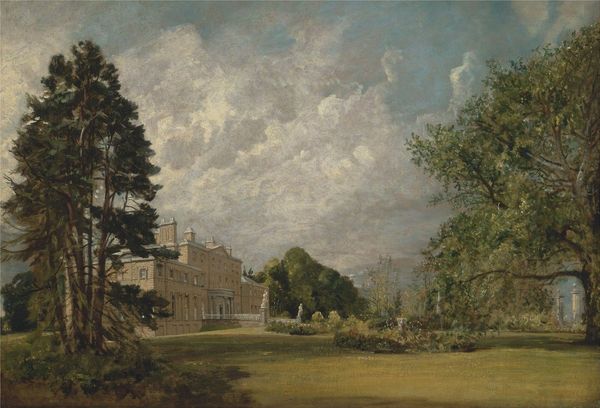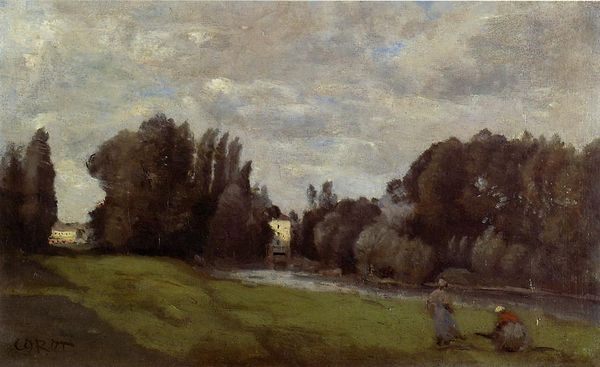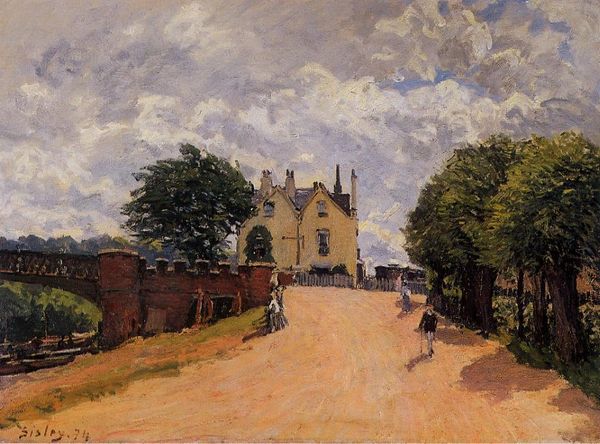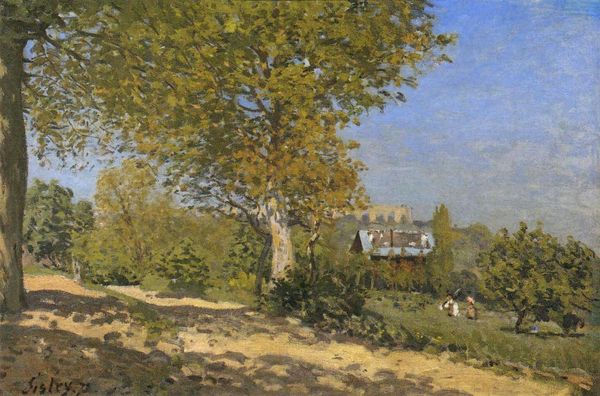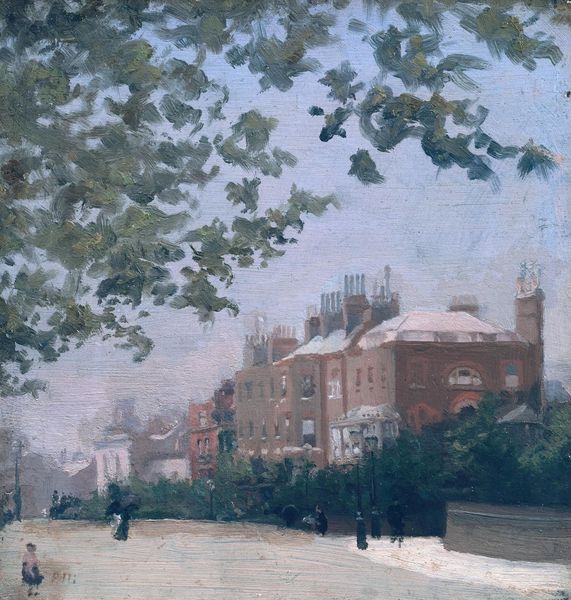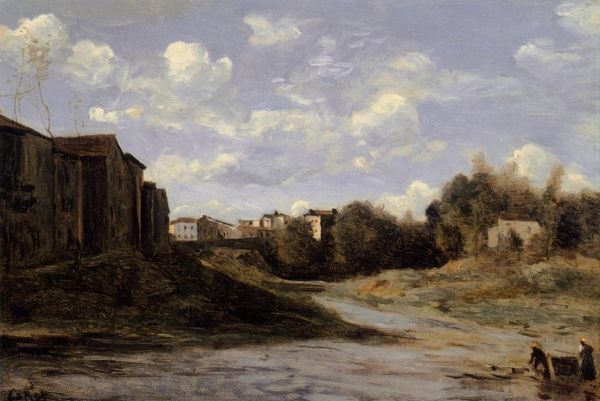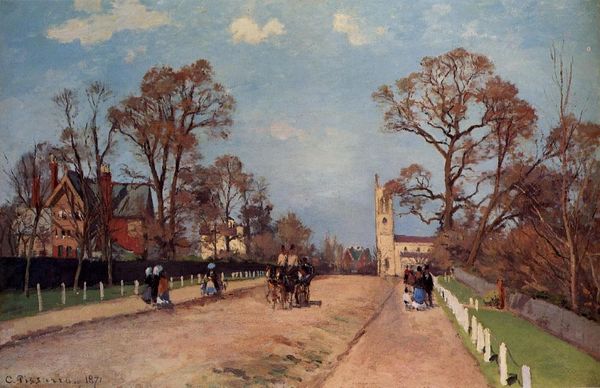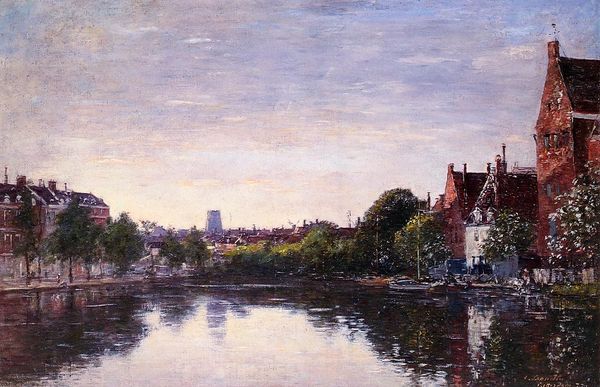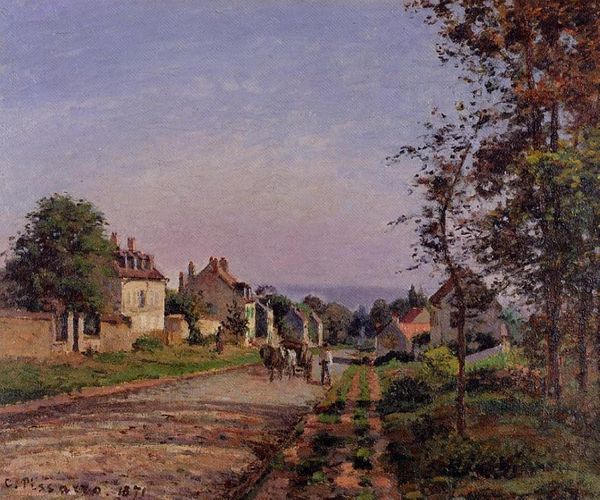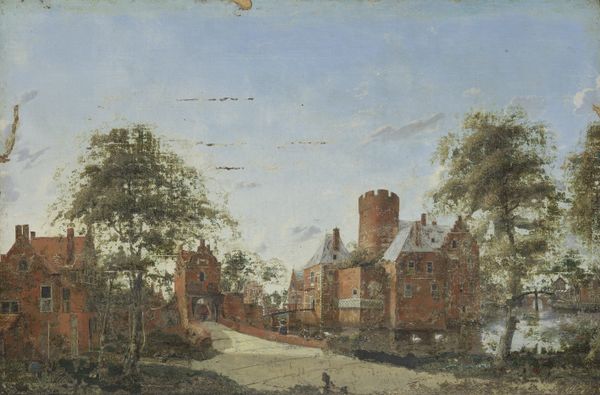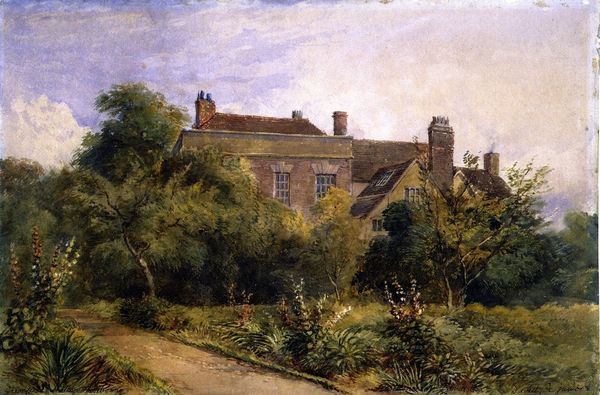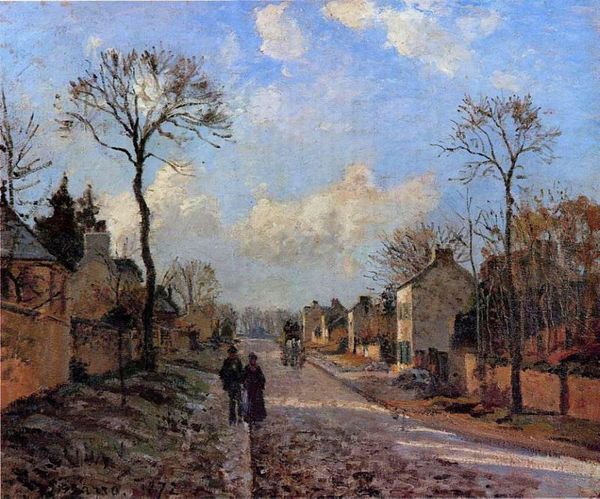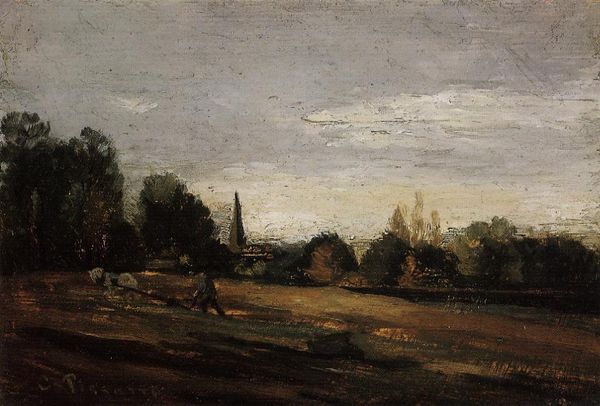
painting, plein-air, oil-paint
#
painting
#
impressionism
#
plein-air
#
oil-paint
#
landscape
#
oil painting
#
cityscape
Copyright: Public domain
Curator: Let's turn our attention to Claude Monet’s "Argenteuil, the Hospice," created in 1872. What are your initial impressions? Editor: There's a muted, almost somber, quality to it, isn't there? The way the colors blend and the texture of the brushstrokes give it this sense of hazy atmosphere, it feels very palpable, almost damp, if that makes sense. Curator: It does, and it’s a departure from some of Monet's more sun-drenched later works. During this time, Argenteuil was transforming from a small village to a bustling suburb of Paris, something reflected in his work. We see this transition embodied in the very material components – his commitment to painting en plein air really captures the quickly changing atmosphere. Editor: The outdoor painting certainly captures the fleeting effects of light on the buildings. Look closely at those touches of unblended pigment – the way they evoke atmosphere in lieu of sharply defined shapes. Did industrial pigments and innovations in the manufacture of paints affect his work, given his tendency to want to work faster, en plein air, and try new materials? Curator: Absolutely. The availability of new synthetic pigments broadened Monet’s palette and influenced the techniques employed by Impressionists. He moved to Argenteuil specifically to escape Paris, setting up his studio to paint the ever-changing skies and urban landscape he found in his backyard. Editor: You can sense his interest in industry even with its softened representation—visible in the brickwork or smokestacks rising slightly above the trees. There's this contrast that is particularly interesting, I think: to reconcile the quickly developing manufacturing and the desire to retain this sense of natural idyllic atmosphere. Curator: Precisely. What is also compelling is the shift in societal perception. During this time, art began being assessed less by narrative or historical depiction and more by how convincingly it captured a scene, particularly its light and ambience. Editor: In this painting, Monet challenges assumptions about what constitutes proper or traditional art, or even painting in general, embracing modernity while examining material and making practice. Fascinating. Curator: Indeed, it marks a shift in not just what art represents but how its social value comes to be defined, capturing a crucial transitional moment. Editor: And the fact that we're talking about all these different angles now really speaks to Monet's rich layers embedded into this scene.
Comments
No comments
Be the first to comment and join the conversation on the ultimate creative platform.
